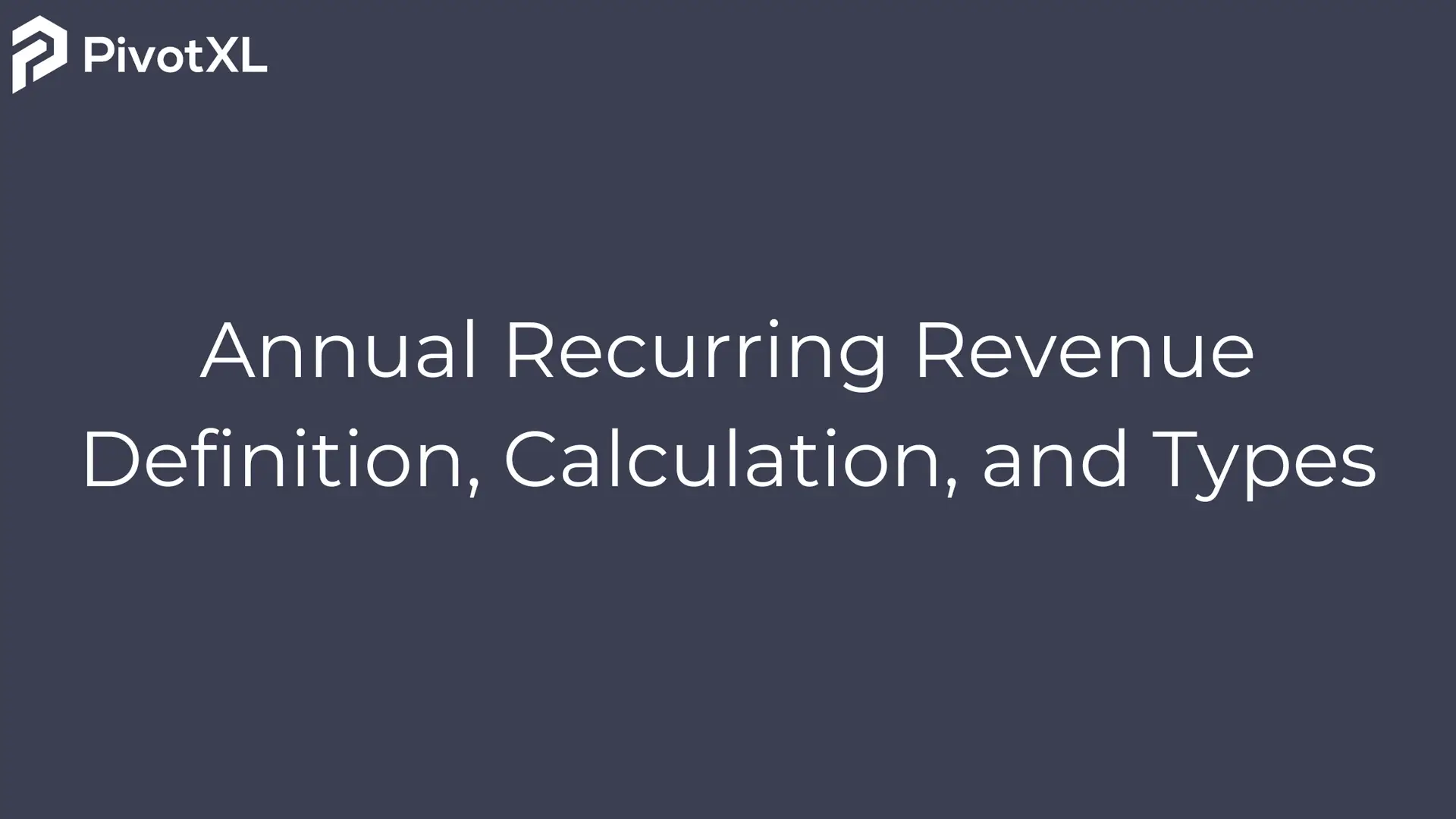Introduction
Annual Recurring Revenue (ARR) is a common topic in SaaS board discussions and provides the starting point for most SaaS financial planning and analytics (FP&A) projections. However, it can be easy to confuse ARR in the SaaS context with other financial metrics that share the same acronym, such as “Annual Run Rate” and “Accounting Rate of Return.”
So, let’s clarify.
In the SaaS context, ARR is the recurring revenue from subscriptions, normalized over a period of one year. Given its “recurring” nature, a SaaS company’s ARR captures revenue only from subscriptions.
In this article, we’ll discuss why ARR is an important metric for SaaS companies, the different types of Annual Recurring Revenue you need to know, and how to calculate them. We’ll also look at how ARR differs from generally accepted accounting principles (GAAP) revenue.
Why is ARR such an important metric for SaaS companies?
1. A leading indicator to track momentum
In the SaaS world, ARR Formula is a core metric that boards and investors use to evaluate a company’s prospects for success. SaaS companies can use the metric to set forward growth targets and sales quotas. Annual Recurring Revenue is also useful for capacity planning, where your existing ARR can be used to calculate a new, forward-looking ARR target.
In fact, ARR provides the basis for several KPI-based SaaS planning processes and projections. It plays a key role in the valuation of SaaS companies, where investors track ARR trends to determine valuation multiples (the ratio of a company’s ARR and its valuation) during funding rounds.
2. Gives you a quick way to track gross sales
ARR is a quick way to measure top-line growth. Calculating your ARR provides a snapshot of where your business currently stands in terms of gross sales.
3. Provides insights into different areas of business
There are six different types of ARR that provide insights into sales, customer success, and customer lifetime value (LTV).
Some types of ARR may seem similar, but they offer different perspectives on performance. By analyzing them collectively, you can gain a more comprehensive understanding of your SaaS business finances.
The 6 Types of ARR You Must Know and Why
1. New ARR
Definition:
New ARR represents the revenue gained from brand-new customers who have subscribed to a SaaS product for the first time. It is also known as “New Logo ARR” or “New Business ARR.”
Why It Matters:
New ARR indicates the effectiveness of sales and marketing strategies in acquiring new customers. High New ARR means a company is growing by attracting fresh customers, which is essential for scaling SaaS businesses.
2. Expansion ARR
Definition:
Expansion ARR refers to the revenue generated from existing customers who upgrade their plans through upselling or cross-selling.
Why It Matters:
Expansion ARR helps measure the effectiveness of customer success teams and expansion strategies. Since acquiring new customers is more expensive than retaining existing ones, growing Expansion ARR is a cost-effective way to boost revenue.
3. Renewal ARR
Definition:
Renewal ARR is the recurring revenue retained from existing customers who renew their subscriptions at the end of their contract period.
Why It Matters:
High Renewal ARR indicates strong customer satisfaction and long-term revenue stability. It is often used to measure customer loyalty and retention rates.
4. Churned ARR
Definition:
Churned ARR refers to the revenue lost due to customer cancellations or non-renewals.
Why It Matters:
Churned ARR helps SaaS companies understand revenue leakage and take proactive measures to reduce customer churn.
5. Contraction ARR
Definition:
Contraction ARR represents the reduction in revenue due to customers downgrading their subscription plans.
Why It Matters:
Tracking Contraction ARR helps identify pricing or product issues that may be causing customers to reduce their spending.
6. Resurrected ARR
Definition:
Resurrected ARR refers to revenue regained from customers who previously churned but later reactivated their subscriptions.
Why It Matters:
This metric helps measure win-back efforts and provides insights into customer behavior and engagement.
How Do You Calculate Your Company’s Total ARR (With Examples)?
ARR is calculated using the following formula:
ARR = New ARR + Expansion ARR + Renewal ARR – Churned ARR – Contraction ARR
For example, consider the following data for a SaaS company:
- New ARR: $5M
- Expansion ARR: $2M
- Renewal ARR: $3M
- Churned ARR: $1M
- Contraction ARR: $1M
ARR = 5M + 2M + 3M – 1M – 1M
ARR = $8M
Alternatively, you can calculate ARR using Monthly Recurring Revenue (MRR):
ARR = MRR × 12
If a SaaS company has an MRR of $700,000:
ARR = 700,000 × 12
ARR = $8,400,000
What is a Good SaaS ARR Growth Rate?
There is no single “good” ARR growth rate. However, here are some benchmarks based on company stage:
- Angel/Seed Stage: $2M ARR
- Series A: $6M ARR
- Series B: $15M ARR
- Series C: $35M ARR
- Series D and Later: $50M ARR
- After IPO: $1B+ ARR
Smaller companies tend to grow faster, while larger companies generally have lower ARR growth rates.
ARR vs. GAAP Revenue: Understanding the Differences
ARR differs from GAAP revenue in the following ways:
- ARR only includes recurring revenue, while GAAP revenue includes one-time payments such as setup fees, professional services, and consulting revenue.
- ARR provides a forward-looking metric, while GAAP revenue is based on recognized income.
Since ARR excludes one-time revenue sources, it is always lower than total revenue but provides a more predictable view of business performance.
How PivotXL Simplifies ARR Analysis and Tracking
Tracking ARR becomes increasingly complex with modern SaaS pricing models, which involve multiple pricing tiers, contract lengths, and variable billing components.
Many FP&A teams rely on spreadsheets or BI tools, which have limitations:
- Spreadsheets are inflexible and prone to errors.
- BI tools provide historical insights but lack real-time forecasting.
PivotXL offers a purpose-built solution for FP&A teams by:
- Automating calculations and financial consolidation.
- Providing real-time tracking dashboards.
- Enabling advanced scenario modeling to analyze “what-if” cases.
With PivotXL, you can seamlessly track, analyze, and optimize your ARR Formula, ensuring sustained SaaS growth.



